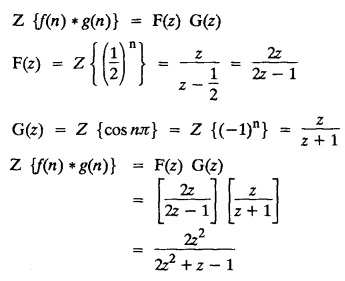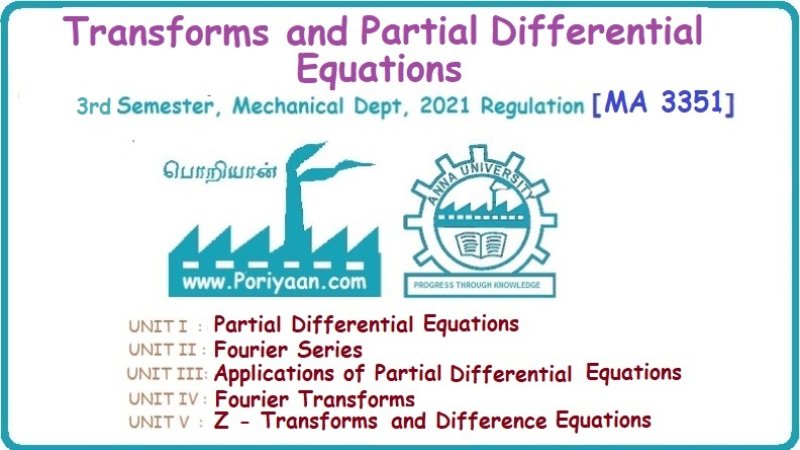Transforms and Partial Differential Equations: Unit V: Z - Transforms and Difference Equations
Convolution Theorem
Definition, Statement, Proof, Solved Example Problems | Z - Transforms
The convolution theorem plays an important role in the solution of difference equations and in probability problems involving sums of two independent random variables.
CONVOLUTION THEOREM The convolution theorem plays an important role in the solution of difference equations and in probability problems involving sums of two independent random variables. Definition: Convolution of sequences : 1. The convolution of two sequences {x(n)} and {y (n)} is defined as 2. The convolution of two functions f(t) and g(t) is defined as State and prove convolution theorem on Z-transform. Statement : convolution operation. Proof : We know that, XI. Z-transform of f (n) * g (n) type. 1. Find the Z-transform of the convolution of x(n) = u(n) and y(n) = an u (n) Solution : The Z-transform of the convolution of x(n) and y(n) is 2. Find the Z-transform of f(n) * g(n), where f(n) = u(n) and Solution : By convolution theorem, 3. Find the Z-transform of f(n) * g(n) where f(n) = Solution : By convolution theorem, XII. Use convolution theorem to find the inverse Z-transform of (a) Find Solution : 1b. Find Solution : 1(c) Find Solution : 1d. Using convolution theorem evaluate inverse Z-transform of Solution : Here, a = 1, b = 3 1(e). Find Solution : 2. Find Solution : 3(a). Find Solution : 3(b). Find Solution: Replace a by -a in 3 (a), we get







![]() and g(n) = cos nπ
and g(n) = cos nπ



















Transforms and Partial Differential Equations: Unit V: Z - Transforms and Difference Equations : Tag: : Definition, Statement, Proof, Solved Example Problems | Z - Transforms - Convolution Theorem
Related Topics
Related Subjects
Transforms and Partial Differential Equations
MA3351 3rd semester civil, Mechanical Dept | 2021 Regulation | 3rd Semester Mechanical Dept 2021 Regulation
